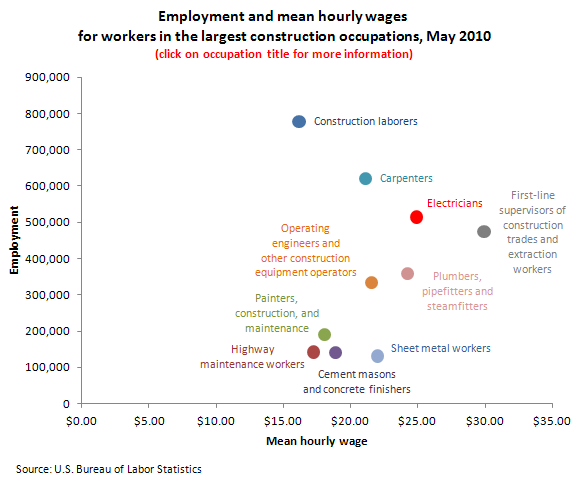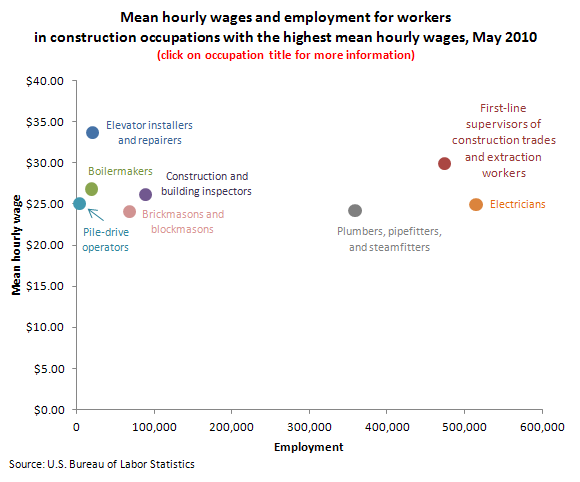December 12, 2011 (The Editor’s Desk is updated each business day.)
Construction employment and wages, May 2010
In May 2010, construction occupations accounted for 4.9 million jobs, down from 6.5 million in May 2006 when employment in construction-related occupations reached a peak. Average wages for construction occupations were $21.12 per hour, about the same as the overall mean for all occupations ($21.35).
Among all construction occupations in May 2010, the ten largest (in terms of employment) accounted for more than 76 percent of total employment in construction.

[Chart data]
Among construction occupations in May 2010, construction laborers was the largest (777,000 workers) and had the lowest mean hourly wage ($16.15).
In May 2010, the eight highest paid construction occupations were specialized construction trade workers or their supervisors.
Earning an average hourly wage of $33.66, elevator installers and repairers (20,430 workers) had the highest wage among construction workers in May 2010. With 4,230 workers, pile-driver operators was the smallest of the high-paying construction occupations.

[Chart data]
In May 2010, three of the construction occupations with the highest mean hourly wages were also among the ten largest occupations—first-line supervisors of construction trades and extraction workers, electricians, and plumbers, pipefitters, and steamfitters.
These data are from the Occupational Employment Statistics program. To learn more, see "Construction employment: a visual essay" (PDF), by Benjamin Cover in the November 2011 issue of the Monthly Labor Review.
Related TED articles
Earnings and wages |
Employment |
Industry |
Occupations
Of interest
Spotlight on Statistics: National Hispanic Heritage Month
In this Spotlight, we take a look at the Hispanic labor force—including labor force participation, employment and unemployment, educational attainment, geographic location, country of birth, earnings, consumer expenditures, time use, workplace injuries, and employment projections.
.
Read more »

